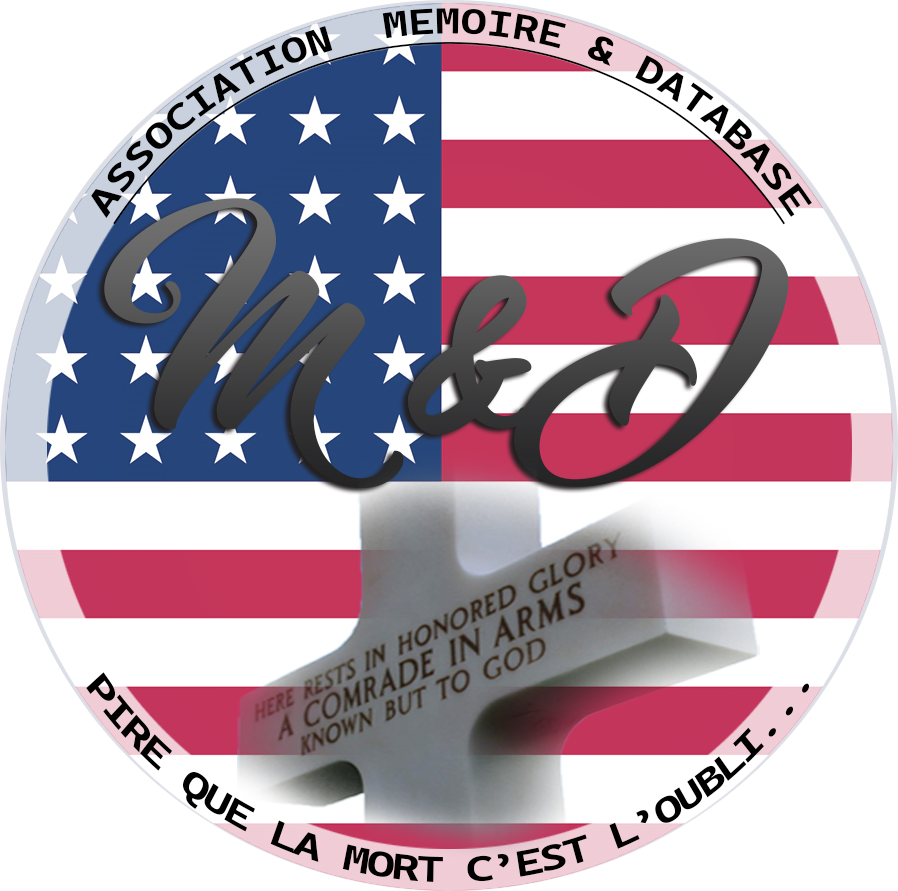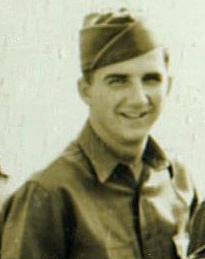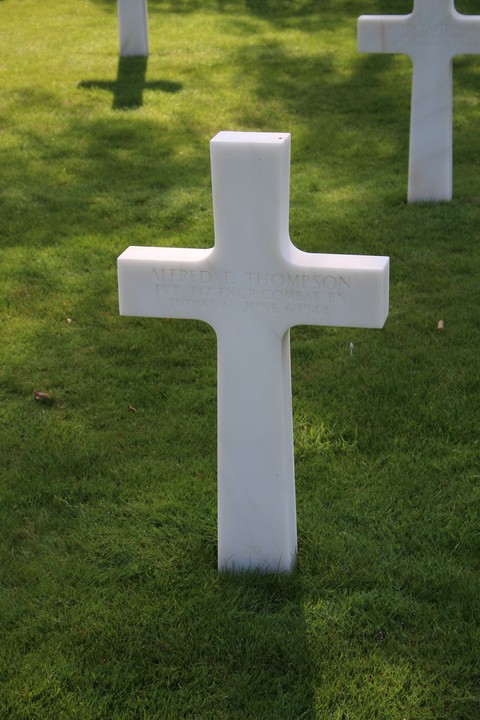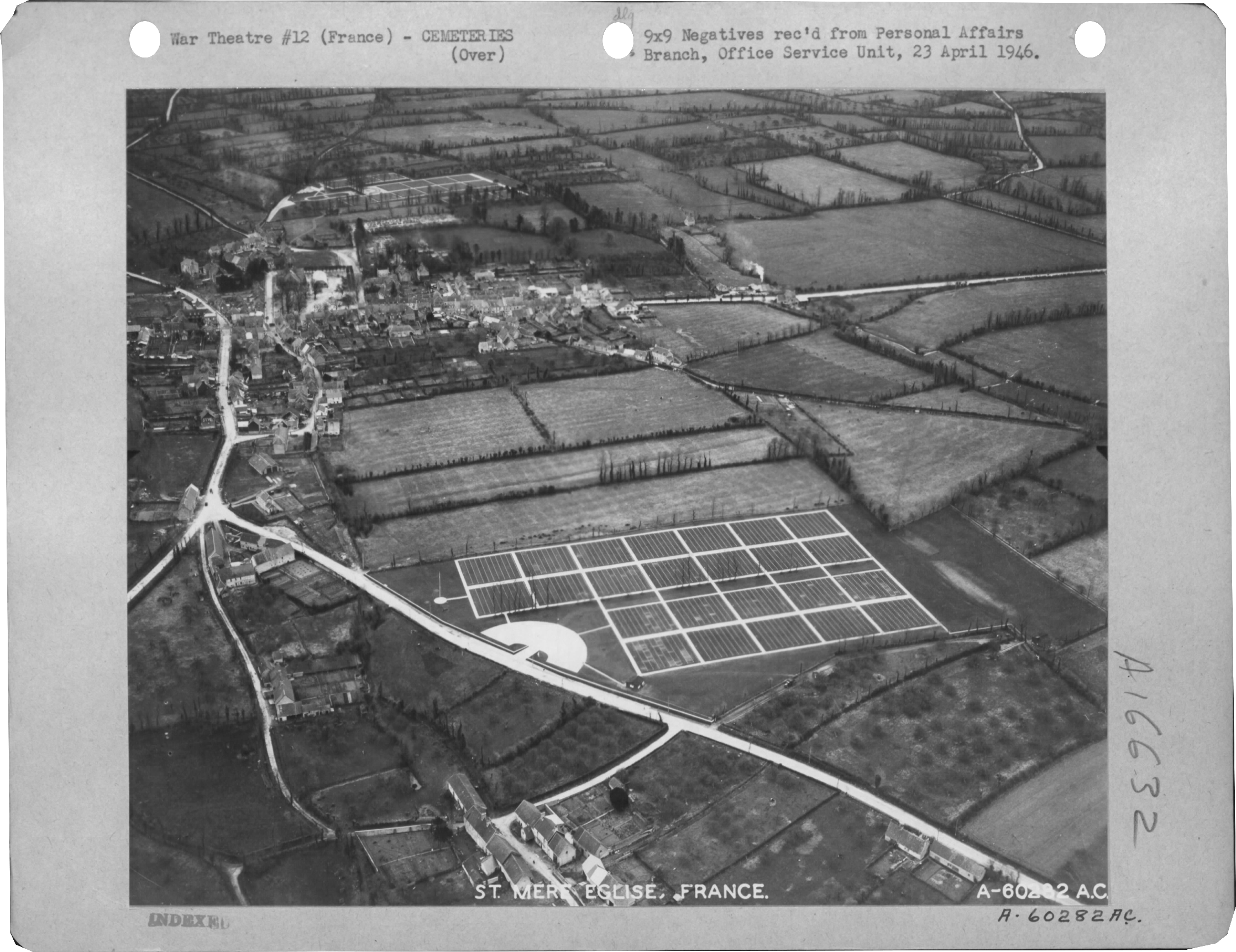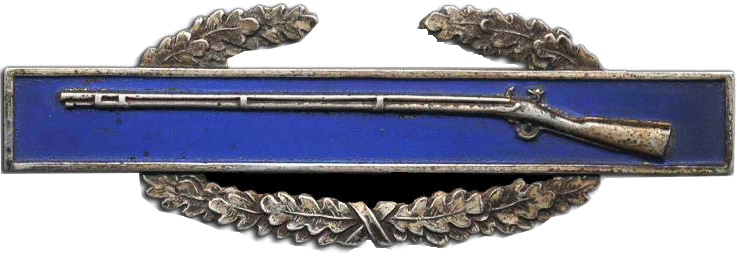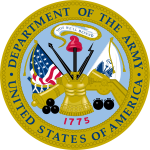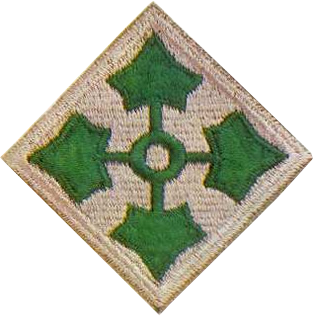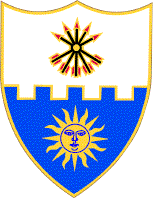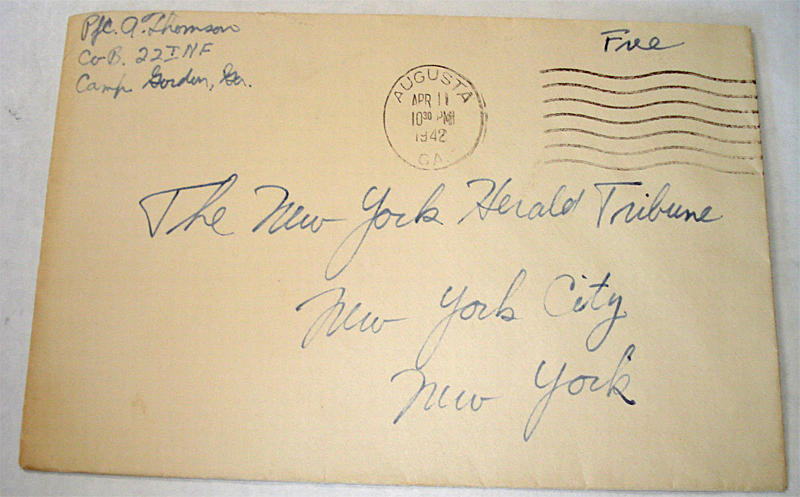|
Arthur S. THOMSON
| ||||||||||||||||||||||||
|---|---|---|---|---|---|---|---|---|---|---|---|---|---|---|---|---|---|---|---|---|---|---|---|---|
|
Source : 1-22infantry.org
| ||||||||||||||||||||||||
| NUMBER OF SERVICE | 32024278 | |||||||||||||||||||||||
| AGE | 29 yo | |||||||||||||||||||||||
| DATE OF BIRTH | 1915 | |||||||||||||||||||||||
| ETAT | Westchester NEW YORK | |||||||||||||||||||||||
| FAMILY | Single | |||||||||||||||||||||||
| RANK | Technician Fifth Grade | |||||||||||||||||||||||
| FONCTION | InfantryMan | |||||||||||||||||||||||
| JOB BEFORE ENLISTEMENT | General industry clerks |  | ||||||||||||||||||||||
| DATE of ENLISTEMENT | 4 March 1941 Jamaica NEW YORK | |||||||||||||||||||||||
| COMPANY | Company B | |||||||||||||||||||||||
| BATTALION | 1st Battalion | |||||||||||||||||||||||
| REGIMENT SQUADRON | 22nd Infantry Regiment | |||||||||||||||||||||||
| DIVISION GROUP | 4th Infantry Division | |||||||||||||||||||||||
| DATE OF DEATH | 14 June 1944 |
Source : F Lavernhe | ||||||||||||||||||||||
| STATUS | KIA | |||||||||||||||||||||||
| PLACE OF DEATH | Quineville | |||||||||||||||||||||||
| CEMETERY TEMPORARY |
CEMTERY TEMPORARY of Ste Mère #2
| |||||||||||||||||||||||
| CEMETERY | NORMANDY AMERICAN CEMETERY of Colleville | |||||||||||||||||||||||
| GRAVE |
| |||||||||||||||||||||||
| DECORATION |
| |||||||||||||||||||||||
| ||||||||||||||||||||||||
| STORY | ||||||||||||||||||||||||
|
Source : 1-22infantry.org
|
Arthur S. Thomson was born in New York in 1915. He was drafted into the Army on March 4, 1941 at Jamaica, New York. His home of residence was listed as Westchester County, New York and his civilian occupation was listed as General Industry Clerks.
| |||||||||||||||||||||||
The envelope for a letter written by Arthur Thomson to the New York Herald Tribune newspaper and postmarked at Augusta, Georgia April 11, 1942 showing Thomson serving at Camp Gordon, Georgia with Company B 22nd Infantry.
Source : 1-22infantry.org
| ||||||||||||||||||||||||
|
The date of his assignment to the 22nd Infantry is unknown but he was serving as a Private with Company B 22nd Infantry at least by October 1941 as he is in a Company photo taken at Fort Benning, Georgia during that time frame. Technician Grade 5 Thomson was killed in action in France during the attack against the Quineville Ridge on June 14, 1944. Arthur S. Thomson was buried in the temporary U.S. Military Cemetery Sainte Mere-Eglise #2 and was moved to the permanent cemetery at Colleville-sur-Mer, most likely in 1948 when the temporary cemeteries were shut down. | ||||||||||||||||||||||||
Activated/Activé |
Normandy/Normandie |
| 1 Jun 1940 | Days of Combat/Jour de Combat 299 |
| Casualties/Victimes 22 660 | |
Entered Combat/Entré au combat |
|
| 6 Jun 44 D-Day | |
|
Commanding Generals/Commandants généraux Maj. Gen. Walter E. Prosser (Jun 40 - Oct 40) |
Campaigns/CampagnesNormandy (6 Jun 44 - 24 Jul 44)
|
PLAN DE ROUTE DE LA CAMPAGNE - CAMPAIGN ROUTE MAP |
|
 |
|
DIVISION CHRONICLEThe 8th Infantry Regiment of the 4th Division was one of the first Allied units to hit the beaches at Normandy on D-day, 6 June 1944. Relieving the isolated 82nd Airborne Division at Ste. Mere Eglise, the 4th cleared the Cotentin peninsula and took part in the capture of Cherbourg, 25 June. After taking part in the fighting near Periers, 6-12 July,, the Division broke through the left flank of the German Seventh Army, helped stem the German drive toward Avranches, and by the end of August had moved to Paris, assisting the French in the liberation of their capital. The 4th then moved into Belgium through Houffalize to attack the Siegfried Line at Schnee Eifel, 14 September, and made several penetrations. Slow progress into Germany continued in October, and by 6 November the Division reached the Hurtgen Forest, where a severe engagement took place until early December. It then shifted to Luxembourg, only to meet the German winter offensive head-on, 16 December 1944. Although its lines were dented, it managed to hold the Germans at Dickweiler and Osweiler, and, counterattacking in January across the Sauer, overran German positions in Fouhren and Vianden. Halted at the Prum in February by heavy enemy resistance, the Division finally crossed 28 February near Olzheim, and raced on across the Kyll, 7 March. After a short rest, the 4th moved across the Rhine 29 March at Worms, attacked and secured Wurzburg and by 3 April had established a bridgehead across the Main at Ochsenfurt. Speeding southeast across Bavaria, the Division had reached Miesbach on the Isar, 2 May 1945, when it was relieved and placed on occupation duty. |
CHRONIQUE DE DIVISIONLe 8e régiment d'infanterie de la 4e division fut l'une des premières unités alliées à débarquer sur les plages de Normandie le 6 juin 1944, jour du débarquement. Soulager la 82nd Airborne Division isolée de Ste. Mère Eglise, le 4e défricha la presqu'île du Cotentin et participa à la prise de Cherbourg le 25 juin. Après avoir pris part aux combats près de Periers, du 6 au 12 juillet, la Division a franchi le flanc gauche de la Septième armée allemande, aidé à endiguer la route allemande vers Avranches et, à la fin du mois d'août, s'est installée à Paris, aidant les Français. dans la libération de leur capitale. Le 4e s'est ensuite déplacé en Belgique par Houffalize pour attaquer la ligne Siegfried à Schnee Eifel, le 14 septembre, et a fait plusieurs pénétrations. Les progrès lents en Allemagne se sont poursuivis en octobre et, le 6 novembre, la division a atteint la forêt de Hurtgen, où un engagement sévère a eu lieu jusqu'au début du mois de décembre. Il s'est ensuite déplacé vers le Luxembourg, seulement pour affronter l'offensive allemande d'hiver, le 16 décembre 1944. Bien que ses lignes aient été bosselées, il a réussi à tenir les Allemands à Dickweiler et Osweiler et, contre-attaquant en janvier à travers la Sauer à Fouhren et Vianden. Arrêtée au Prum en février par une forte résistance ennemie, la Division a finalement franchi le 28 février près d'Olzheim et a couru à travers le Kyll, le 7 mars. Après un court repos, le 4 mars traversa le Rhin à Worms, attaqua et sécurisa Wurzburg le 29 mars et, le 3 avril, il établit une tête de pont sur le Main à Ochsenfurt. Accélérant le sud-est à travers la Bavière, la division avait atteint Miesbach sur l'Isar, le 2 mai 1945, quand elle fut relevée et placée en devoir d'occupation. |
| SOURCE INFORMATION & PHOTO | Armydivs.squarespace.com |
|---|
| SOURCE INFORMATION & SOURCE PHOTO | John & Gladys KING - 1-22infantry.org - Aad.archives.gov - Abmc.gov - Findagrave.com - JF PELLOUAIS |
|---|---|
| PROGRAMMER | Henri, Garrett, Clive, Frédéric & Renaud |


